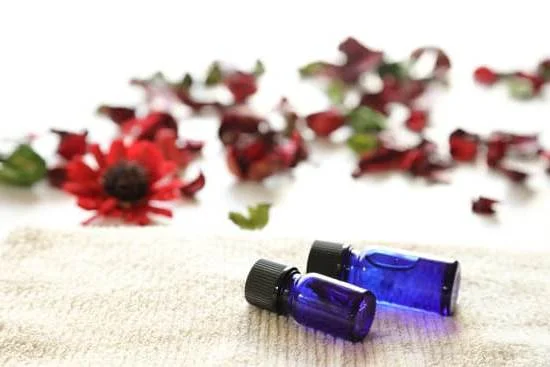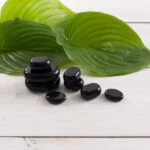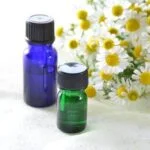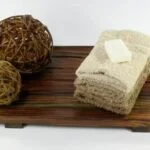An aromatherapy wrap is a form of holistic therapy that combines the benefits of heat and essential oils to promote relaxation, alleviate stress, and enhance overall well-being. This article will delve into the origins, techniques, and science behind aromatherapy wraps, as well as provide a step-by-step guide for performing one at home.
Additionally, we will explore the numerous health benefits associated with aromatherapy wraps, including stress relief and pain management. By understanding the power of essential oils and learning how to incorporate them into a wrap, you can elevate your self-care routine and experience the transformative effects of this ancient healing practice.
The Origins of Aromatherapy Wraps
Aromatherapy wraps have a fascinating history that dates back to ancient times. The use of aromatic plants and herbs for healing purposes can be traced back to various civilizations, including the Egyptians, Greeks, and Chinese. These ancient cultures recognized the therapeutic benefits of essential oils and used them in different ways, including through the practice of aromatherapy wraps.
In Egypt, aromatic plants were widely used for their medicinal properties. Egyptians would create a paste by grinding herbs and flowers and mix it with oils or fats. This mixture was then applied to the body and covered with linen wraps. The heat from the body would cause the essential oils to release their aromatic molecules, creating a soothing and healing effect.
Similarly, the Greeks also valued aromatic plants for their therapeutic properties. They believed that certain scents had the power to heal both physical and mental ailments. Aromatherapy wraps were used as a way to transfer these healing aromas directly into the body through inhalation and absorption.
Ancient Chinese medicine also utilized aromatic substances in their healing practices. A technique known as moxibustion involved burning dried leaves or stems of specific plants near acupuncture points on the body. This allowed the essential oils in the plant material to penetrate the skin and stimulate energy flow within the body.
The use of aromatherapy wraps in ancient times shows that people recognized the powerful effects of essential oils on physical, emotional, and spiritual well-being long before modern science confirmed their benefits. In today’s world, we can still harness these ancient techniques by incorporating aromatherapy wraps into our wellness routines.
Understanding Aromatherapy
Aromatherapy is a holistic approach to wellness that harnesses the power of essential oils. These oils are derived from natural plant extracts and are known for their various therapeutic properties. When used in an aromatherapy wrap, these essential oils can promote relaxation, relieve stress, and provide numerous other health benefits.
Essential oils have been used for centuries in various ancient healing practices around the world. The art of aromatherapy can be traced back to ancient Egypt, where plant essences were used for both physical and spiritual healing. In India, Ayurvedic medicine incorporates essential oils into its treatments to balance the body and mind. Similarly, traditional Chinese medicine has long recognized the therapeutic effects of aromatherapy for enhancing overall well-being.
The reason why essential oils are so powerful lies in their chemical composition. These oils are highly concentrated extracts that contain volatile organic compounds (VOCs). When these VOCs are inhaled or applied to the skin, they interact with the body’s physiology and trigger specific responses. For example, lavender essential oil is known for its calming properties and can help alleviate anxiety and insomnia. Peppermint oil, on the other hand, has invigorating effects and can promote mental clarity and focus.
To fully benefit from aromatherapy wraps, it is important to understand which essential oils work best for different purposes. Some common essential oils used in aromatherapy include lavender, eucalyptus, chamomile, rosemary, lemon, and tea tree. Each oil has its own unique set of properties and benefits. For example:
- Lavender oil: promotes relaxation and alleviates stress
- Eucalyptus oil: helps relieve respiratory issues such as congestion and sinusitis
- Chamomile oil: soothes sore muscles and promotes restful sleep
- Rosemary oil: improves focus and mental clarity By selecting the right combination of essential oils based on your needs, you can tailor your aromatherapy wrap experience to achieve maximum therapeutic benefits. Whether you are seeking stress relief, pain management, or simply a sense of relaxation and well-being, aromatherapy wraps can be a highly effective and enjoyable method to enhance your overall wellness.
What Makes an Aromatherapy Wrap Different
An aromatherapy wrap is a unique and effective way to experience the benefits of essential oils. Unlike other methods of aromatherapy such as diffusers or massage, an aromatherapy wrap allows for direct skin contact with the oils, which enhances their therapeutic properties. In this section, we will explore the various types and techniques used in aromatherapy wraps.
There are several different types of aromatherapy wraps, each with its own unique benefits and techniques. One common type is the heat wrap, where the essential oils are applied to a cloth or pad that is heated before being wrapped around specific areas of the body. The heat helps to relax muscles and increase blood flow, allowing for better absorption of the oils.
Another type is the cold wrap, where the essential oils are applied to a cloth or pad that has been cooled in the refrigerator or freezer. This type of wrap is often used for reducing inflammation and relieving pain in sore muscles or joints.
Other types of aromatherapy wraps include wet wraps, where the essential oils are mixed with water and applied to a wet cloth before being wrapped around the body, and dry wraps, where the essential oils are applied directly to a dry cloth or pad before being wrapped around the body.
Each type of wrap has its own unique benefits and techniques, but they all share one thing in common – they provide a convenient and effective way to experience the healing properties of essential oils. By applying them directly to the skin through a wrap, the oils are able to penetrate deep into the tissues and bloodstream, allowing for maximum absorption and effectiveness.
The Science Behind Aromatherapy Wraps
Aromatherapy wraps have gained popularity in recent years due to their potential health benefits and ability to promote relaxation and stress relief. One of the key components that makes aromatherapy wraps effective is the science behind how essential oils can penetrate the skin.
Essential oils are highly concentrated plant extracts that contain various volatile compounds. These compounds, such as terpenes and esters, give essential oils their distinct aroma and therapeutic properties. When applied topically, essential oils have the ability to penetrate the skin and enter the bloodstream.
The skin is composed of multiple layers, with the outermost layer called the stratum corneum. This layer acts as a barrier, protecting the body from external elements. However, certain factors can help facilitate the absorption of essential oils through this barrier.
One factor is the size of the molecules in essential oils. Essential oils consist of small molecules that are able to easily pass through the cells of the stratum corneum. Additionally, massaging or applying heat to the area where the aromatherapy wrap is placed can increase blood circulation and help enhance absorption.
Once absorbed into the bloodstream, these aromatic compounds can then exert their therapeutic effects on both physical and emotional levels. For example, lavender essential oil is known for its calming properties and is often used in aromatherapy wraps to promote relaxation and relieve anxiety.
| Benefits | Effects |
|---|---|
| Promotes relaxation | Calming properties |
| Relieves anxiety | Stress relief |
| Enhances mood | Mental wellbeing |
Step-by-Step Guide
Preparing for an Aromatherapy Wrap
Before you begin your aromatherapy wrap at home, it’s important to gather all the necessary materials and prepare the space for a relaxing experience. Here are some steps to help you get started:
- Choose the right essential oils: Select essential oils that will best suit your needs and desired outcome. Consider whether you want to relax, uplift your mood, or address specific concerns like muscle tension or headaches.
- Gather your supplies: You will need a clean towel, plastic wrap or a large cloth, a bowl of warm water, and your selected essential oils. Optionally, you can also prepare some soothing music or candles to create a serene ambiance.
- Find a comfortable space: Look for a quiet room in your home where you can relax undisturbed. Create a cozy environment by dimming the lights and making sure the room temperature is comfortable.
Performing an Aromatherapy Wrap
Once everything is ready, follow these steps to perform an aromatherapy wrap at home:
- Start with relaxation: Before applying any oils, take some deep breaths and find yourself in a relaxed state of mind. This will enhance the effects of the aromatherapy experience.
- Dilute the essential oils (optional): Depending on the strength of the essential oil and personal preference, you may choose to dilute it with a carrier oil like jojoba or almond oil before applying it directly onto your skin.
- Apply the oils: Take a few drops of your chosen blend and gently massage them onto your body, paying attention to areas that could benefit from stress relief or pain management such as your neck, shoulders, or lower back.
- Wrap yourself up: Once you have applied the oils evenly on your body, wrap yourself tightly with plastic wrap or use a large cloth soaked in warm water and wrung out. This will help the essential oils penetrate your skin and enhance their effects.
- Relax and rest: Lie down in a comfortable position and allow yourself to rest for about 20-30 minutes. Close your eyes, listen to soothing music, or engage in deep breathing exercises to fully relax your mind and body.
- Unwind and remove the wrap: After the recommended time has passed, slowly unwrap yourself and take a warm shower or bath to wash off any excess oils. Pat your skin dry gently with a towel.
Performing an aromatherapy wrap at home can be a wonderful way to unwind, relieve stress, and pamper yourself. It is important to note that if you have any allergies or sensitivities to certain essential oils, it’s best to consult with a professional aromatherapist before trying this technique on your own.
The Health Benefits of Aromatherapy Wraps
Aromatherapy wraps are not only a luxurious and relaxing experience, but they also offer a range of health benefits. The combination of heat, soothing aromas, and essential oils used in these wraps can provide relief from stress, aid in pain management, and offer other therapeutic effects.
Stress Relief
One of the primary benefits of aromatherapy wraps is their ability to relieve stress. The warm compress and calming scents create a serene environment that can help the body and mind relax. Stress relief is crucial for overall well-being as it can improve sleep quality, boost mood, and enhance immune function. Aromatherapy wraps provide a natural way to unwind and let go of daily tension.
Pain Management
Aromatherapy wraps can also be effective in managing pain. The combination of heat and essential oils work together to alleviate muscle soreness, joint pain, headaches, and menstrual cramps. Heat helps soothe aching muscles by increasing blood circulation to the affected areas while essential oils have analgesic properties that can help reduce pain and inflammation.
Other Health Benefits
In addition to stress relief and pain management, aromatherapy wraps offer several other health benefits. Some essential oils used in these wraps have antibacterial or antiviral properties that may help strengthen the immune system. Others have calming effects on the nervous system and may aid in better sleep quality. Furthermore, certain essential oils used in aromatherapy wraps have shown potential in improving digestion or relieving respiratory symptoms such as congestion or allergies.
Overall, aromatherapy wraps provide a holistic approach to wellness by promoting relaxation, managing pain, boosting immunity, improving sleep quality, and more. However, it’s important to note that individual results may vary depending on the person’s specific condition or needs. It’s always advisable to consult with a healthcare professional before incorporating aromatherapy wraps into your wellness routine.
Choosing the Right Essential Oils for Your Aromatherapy Wrap
One of the key components of an aromatherapy wrap is the use of essential oils. These oils are derived from various plants and possess distinct aromas that can have a powerful impact on your mood, emotions, and overall wellbeing. When selecting essential oils for your aromatherapy wrap, it is important to choose ones that align with your specific needs and preferences.
There are numerous essential oils available, each with its own unique properties and benefits. For relaxation and stress relief, lavender oil is a popular choice. Known for its calming effects, it can help promote a sense of tranquility and aid in sleep. On the other hand, if you are looking to invigorate your senses and boost energy levels, citrus oils such as lemon or orange may be more suitable.
For those seeking pain relief or muscle relaxation, oils like eucalyptus or peppermint can be beneficial. With their cooling and analgesic properties, these oils can provide soothing comfort when applied topically during an aromatherapy wrap. Additionally, if you are experiencing respiratory issues or congestion, eucalyptus oil can help clear the airways and promote easier breathing.
When choosing essential oils for your aromatherapy wrap, it is also important to consider personal preferences regarding scent. Some people may find certain aromas more appealing or comforting than others. Experimenting with different combinations of oils can help you discover what works best for you. It is worth noting that essential oils should always be diluted before applying them directly to the skin during an aromatherapy wrap to prevent any potential irritation.
By carefully selecting the right essential oils for your aromatherapy wrap, you can tap into their therapeutic benefits while enjoying a customized sensory experience tailored to your individual needs. Whether you seek relaxation, rejuvenation, pain relief, or a mood boost, there is an aroma out there to suit every need. With the right combination of essential oils, you can enhance your overall wellbeing and elevate your aromatherapy wrap to new heights of effectiveness and enjoyment.
Recommended Practices and Precautions
When it comes to enjoying the full benefits of an aromatherapy wrap, it is essential to follow recommended practices and take necessary precautions. While this holistic approach to wellness can provide numerous advantages, it is crucial to prioritize safety and ensure a positive experience. Here are some safety tips for enjoying the full benefits of an aromatherapy wrap.
Firstly, it is important to choose high-quality essential oils from reputable sources. Using pure and organic essential oils helps ensure that you are receiving the best possible therapeutic benefits without any harmful additives or chemicals. Always read the labels carefully to ensure that the oils are safe for topical application.
Additionally, it is recommended to dilute essential oils in a carrier oil before applying them to the skin during an aromatherapy wrap. Essential oils are highly concentrated substances and can cause skin irritation or allergic reactions if used undiluted. Diluting them in a carrier oil such as almond oil, coconut oil, or jojoba oil helps protect your skin from potential adverse effects.
When performing an aromatherapy wrap at home, always perform a patch test before applying the diluted essential oil mixture on a larger area of your body. Apply a small amount of the mixture on your inner forearm and wait for 24 hours to check for any signs of irritation or allergic reactions. If you experience any discomfort or redness during this time, avoid using that particular blend of essential oils.
Moreover, it is crucial to maintain proper hygiene throughout the entire process. Ensure that your hands and all tools used in the application of the aromatherapy wrap are clean and free from any contaminants. This helps prevent any potential infections or adverse reactions on your skin.
Lastly, it is recommended not to exceed the recommended exposure time for aromatherapy wraps. While these wraps can be relaxing and beneficial when done correctly, extended exposure may lead to skin sensitivity or other adverse effects. It is important to follow the recommended guidelines and consult with a qualified aromatherapist if you are unsure about the appropriate duration for your specific needs.
By following these recommended practices and taking necessary precautions, you can safely enjoy the full benefits of an aromatherapy wrap. Prioritizing safety ensures that you have a positive experience and make the most out of this holistic approach to wellness.
Conclusion
In conclusion, aromatherapy wraps offer a holistic approach to wellness and have been used for centuries to promote relaxation, alleviate stress, manage pain, and improve overall wellbeing. By harnessing the power of essential oils and incorporating them into a wrap technique, these treatments can have a profound effect on both the mind and body.
Aromatherapy wraps have deep roots in ancient healing practices, where natural remedies were used to address various ailments. The understanding of aromatherapy has evolved over time, with modern science shedding light on how essential oils penetrate the skin and interact with our bodies on a cellular level. This knowledge has paved the way for different types and techniques of aromatherapy wraps to emerge.
Performing an aromatherapy wrap at home is not only convenient but also allows individuals to tailor the experience to their specific needs. By carefully selecting the right essential oils that suit their preferences and desired benefits, one can truly customize this self-care practice. However, it is important to follow recommended practices and precautions to ensure safety and maximize the full benefits of these treatments.
Embracing aromatherapy wraps as part of your wellness routine can elevate your wellbeing on multiple levels. From relieving stress and managing pain to promoting relaxation and improving sleep quality, these treatments offer a natural alternative for finding balance in today’s fast-paced world. So why not take a moment for yourself, indulge in the soothing scents of essential oils, and immerse yourself in the transformative experience of an aromatherapy wrap? Your mind, body, and soul will thank you.
Frequently Asked Questions
What are the benefits of aromatherapy wraps?
Aromatherapy wraps offer numerous benefits for the mind and body. Firstly, they can promote relaxation and reduce stress levels. The essential oils used in aromatherapy have been shown to have calming properties that help ease tension and anxiety. Additionally, these wraps can provide relief from muscle aches and pains due to their anti-inflammatory properties.
Some essential oils used in these wraps, such as lavender or eucalyptus, have been known to reduce pain and inflammation. Moreover, aromatherapy wraps can moisturize the skin and improve its appearance by hydrating dry areas and improving elasticity. Lastly, the pleasant scents of the essential oils used in these wraps can enhance mood and uplift spirits.
What to expect when you get a body wrap?
When you undergo a body wrap treatment, there are certain aspects you can expect during the process. Typically, it starts with exfoliation of the skin to remove dead cells and improve product absorption. Afterward, a specialized mixture that usually includes ingredients like mud, clay, seaweed, or herbal compounds is applied to the body.
This mixture is then wrapped securely around your skin using bandages or plastic wrap. Once wrapped up, you might experience a sensation of warmth or coolness on your skin as the ingredients in the wrap work their magic. During this time, it’s common to rest or relax while letting the treatment penetrate your skin for about 30-60 minutes before being unwrapped or rinsed off.
Do detox wraps really work?
Detox wraps claim to help rid your body of toxins through sweating but their effectiveness is still debated among experts. While some people may report feeling lighter or experiencing temporary inch loss after a detox wrap session due to water weight loss through excessive sweating, these effects are typically short-lived.
These wraps often involve tightly winding bandages soaked in various solutions around certain areas of the body like the abdomen or thighs to stimulate sweating while promoting detoxification through osmosis.

Are you looking for a natural way to improve your health and wellbeing?
If so, aromatherapy may be the answer for you.





